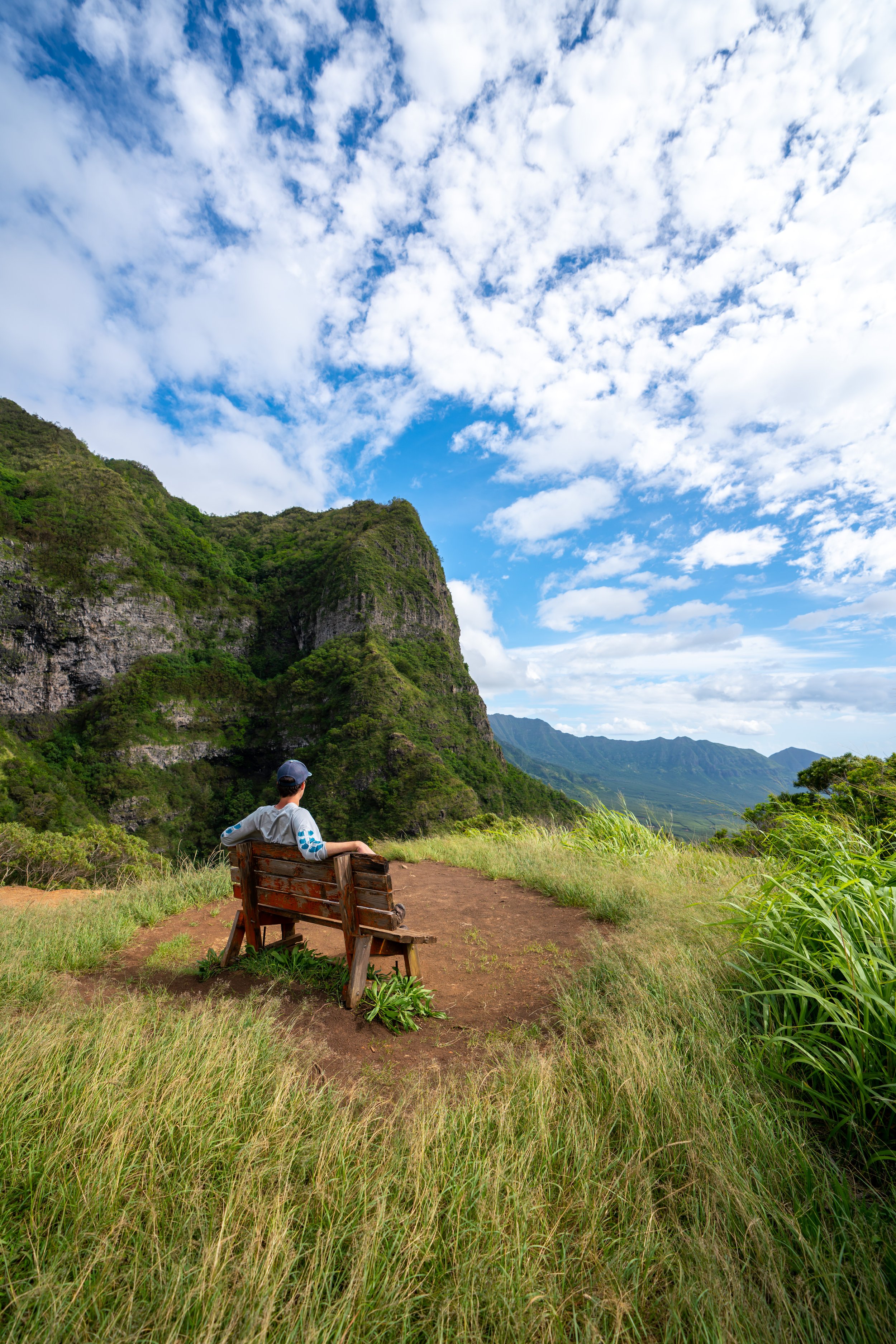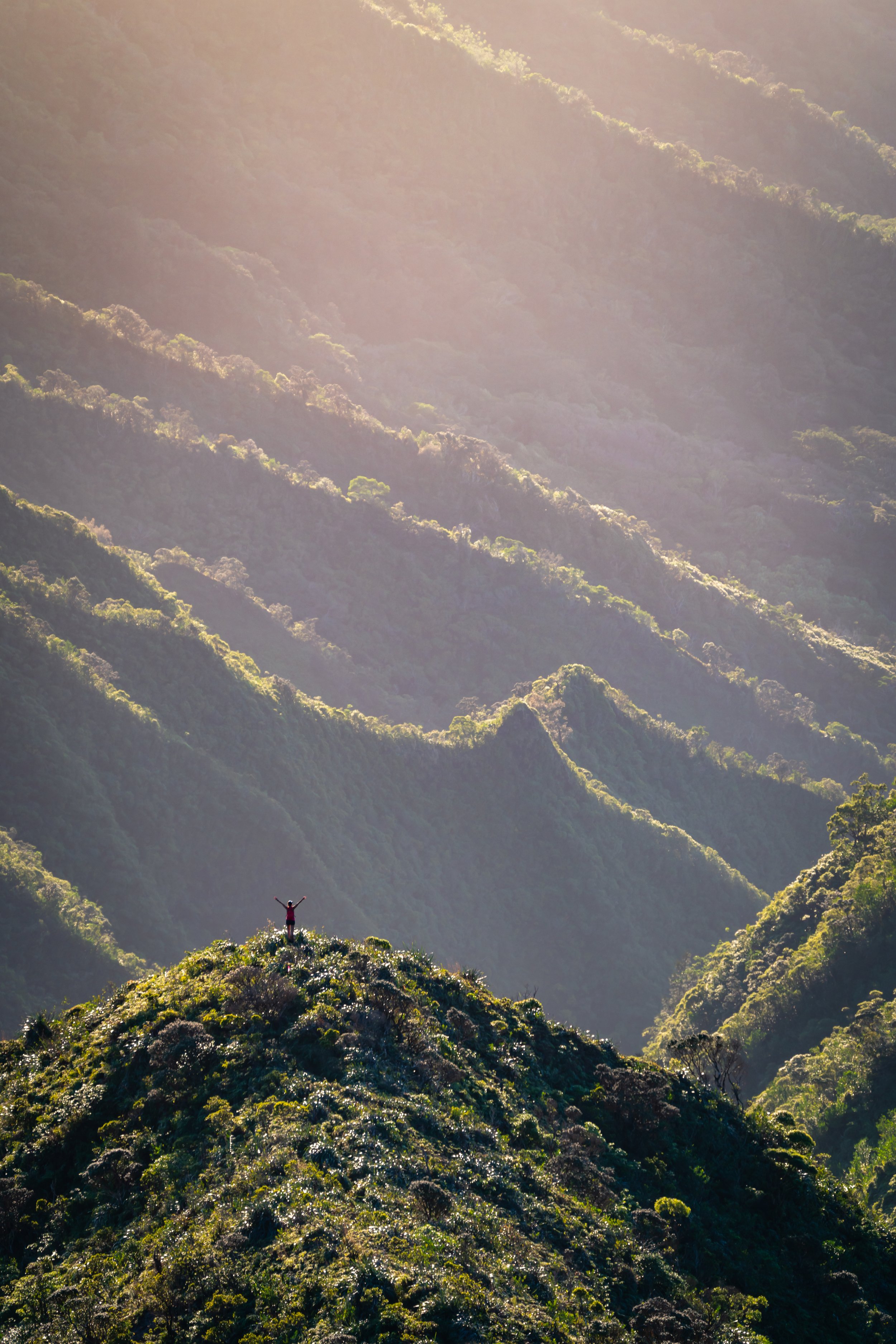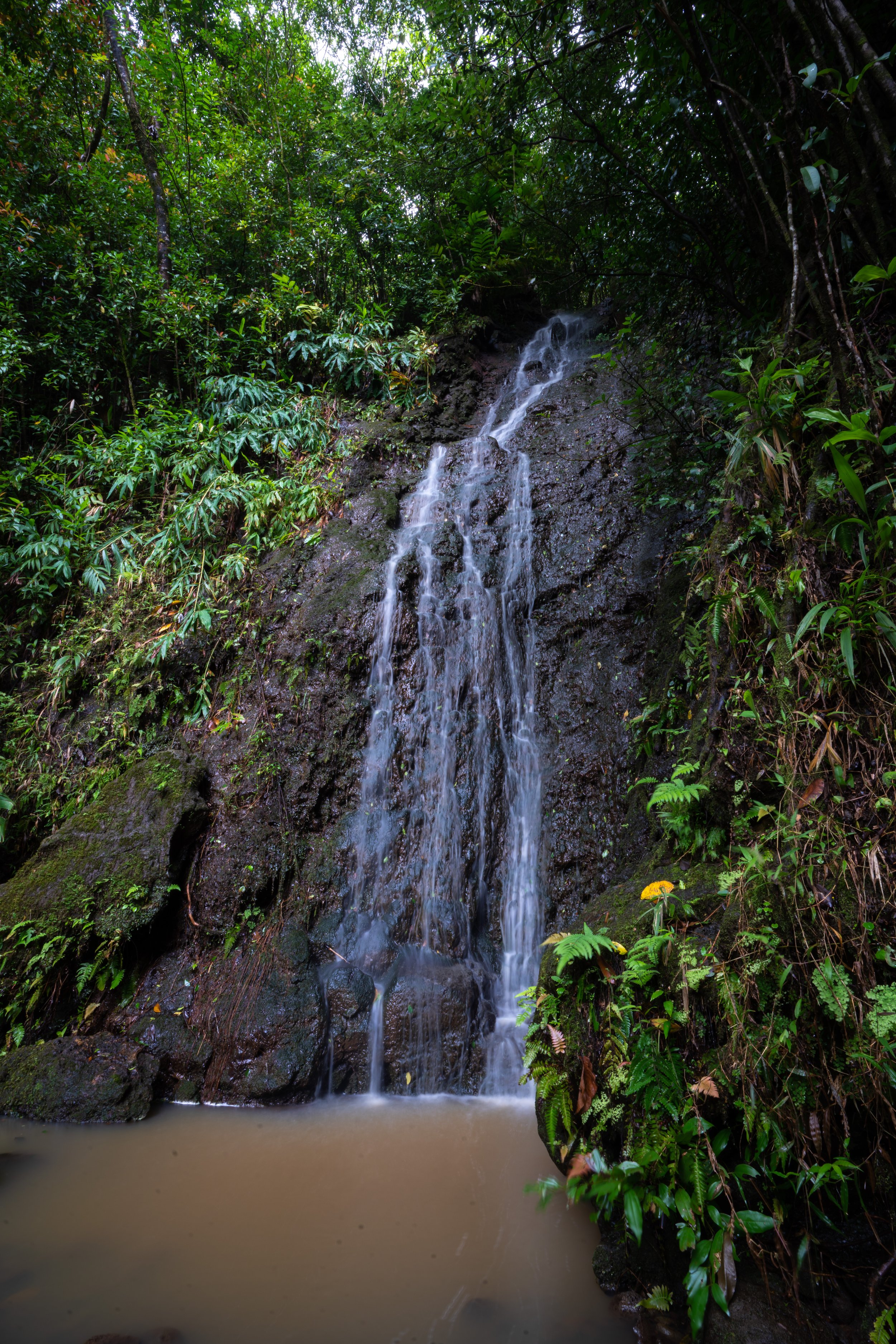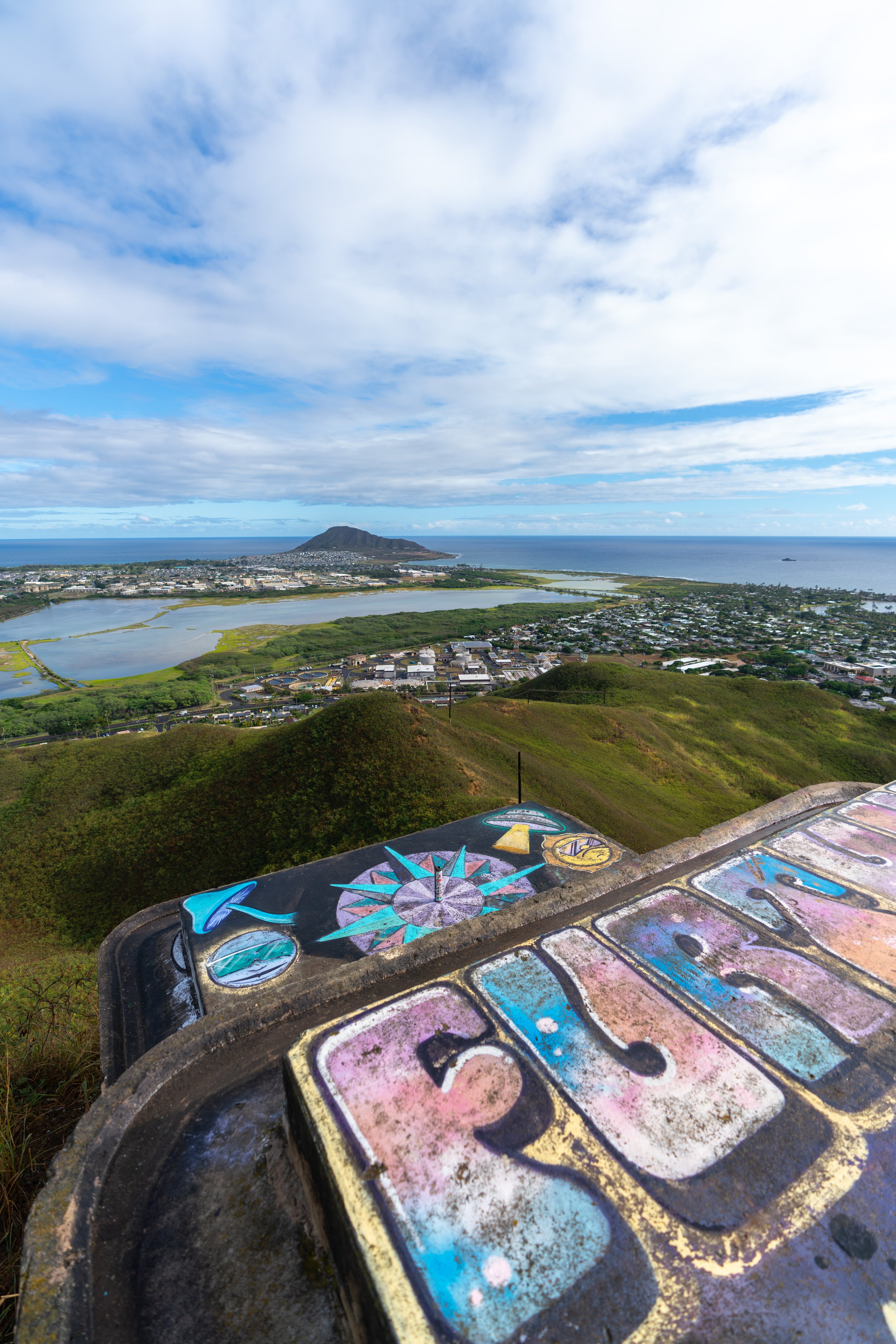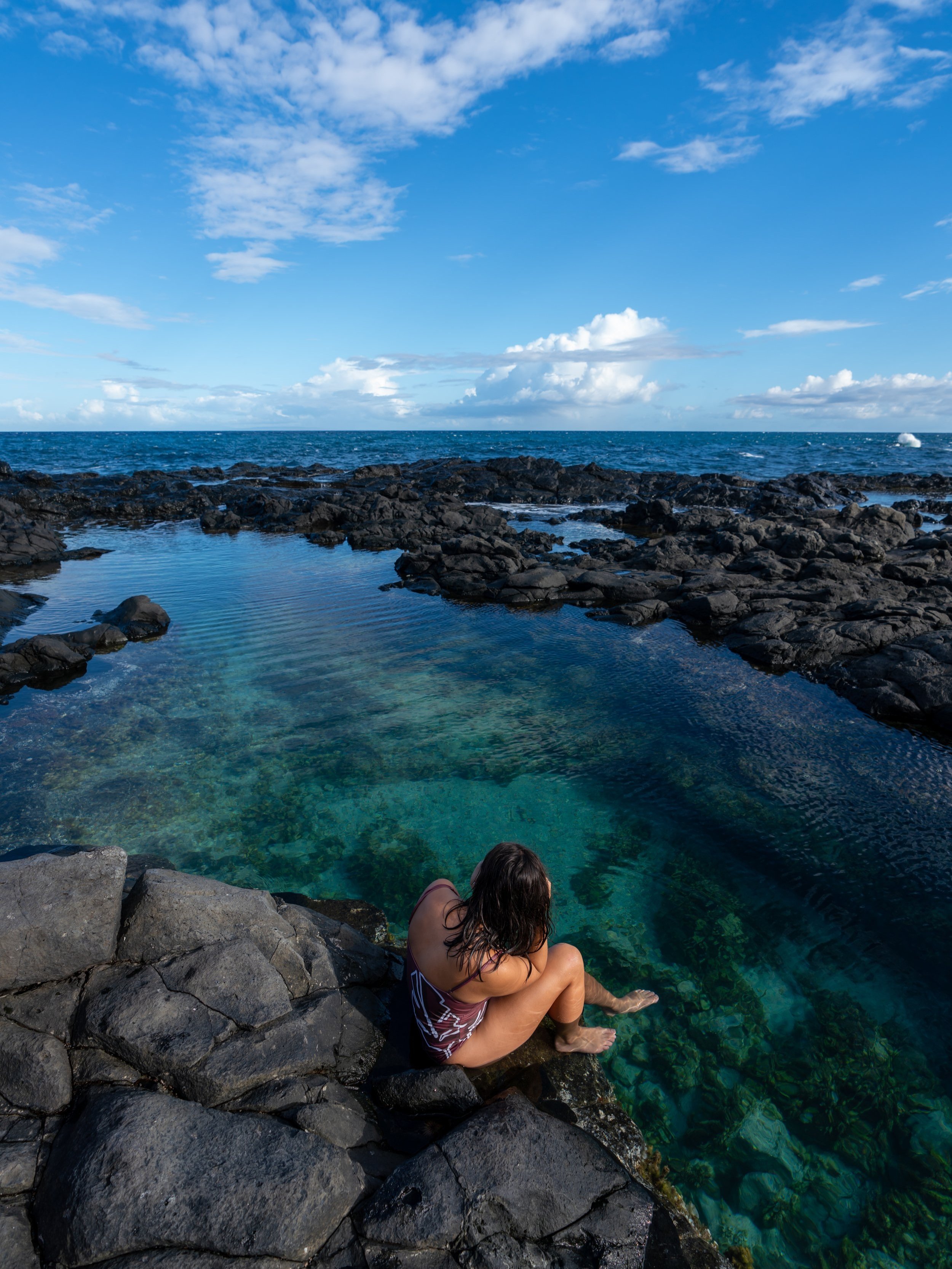Hiking the Puʻu ʻO Kona Trail via Kuliʻouʻou Valley on Oʻahu, Hawaiʻi
Distance: 3.6 miles / 5.8 km
The Puʻu ʻO Kona Trail, also called the Puʻu ʻO Kona Ridge Trail, on Oʻahu is a beautiful alternative day hike in the back of Kuliʻouʻou Valley that is often thought of in connection with the Kuliʻouʻou Ridge Trail, as the two can be combined to create one longer loop that both begins and ends at the same trailhead.
This is where the name Kuliʻouʻou Loop Trail comes from, which involves either ascending Kuliʻouʻou Ridge or the Puʻu ʻO Kona Trail, followed by a short connection along the Koʻolau Summit Trail (KST).
This is to say that the Puʻu ʻO Kona-Kuliʻouʻou section of the KST is one of the most trafficked portions of the summit trail because it allows for a relatively quick adventure across the top without being more involved, as most summit adventures often are.
In any case, the Puʻu ʻO Kona Trail ascends the much quieter and slightly more challenging side of Kuliʻouʻou Valley, making it a perfect adventure for anyone interested in a more adventurous and, in my opinion, more beautiful day hike compared to Kuliʻouʻou Ridge.
Kuliʻouʻou Valley Trailhead Parking
Parking for both the Puʻu ʻO Kona Trail and the Kuliʻouʻou Ridge Trail are located at the same trailhead in the back of Kuliʻouʻou Valley on Kālaʻau Place.
That said, parking on Kālaʻau Place has very limited space for both residents’ cars, as well as hikers all fighting for the same spots. Therefore, parking is one of the biggest reasons that I recommend starting early—especially on weekends!
Google Maps Directions: Puʻu ʻO Kona Trailhead
Hiking the Puʻu ʻO Kona Ridge Trail
The Puʻu ʻO Kona Ridge Trail begins at the very end of Kālaʻau Place, which follows the same trail as Kuliʻouʻou Ridge for the first 0.1 miles (0.2 km).
Kuliʻouʻou-Puʻu ʻO Kona Junction
When the Kuliʻouʻou Ridge/ Valley Trail split off the service road to the right, go straight (left) to continue further, where the Puʻu ʻO Kona Trailhead will be found shortly after the stream up ahead.
Read My Separate Posts: Kuliʻouʻou Ridge Trail / Kuliʻouʻou Valley Trail
Puʻu ʻO Kona Ridge Trailhead
On the far side of the Kuliʻouʻou Stream, the Puʻu ʻO Kona Trail will begin in the left corner of the pavement, closest to the fence.
Following the trailhead, the Puʻu ʻO Kona Trail begins ascending the side of Puʻu ʻO Kona Ridge, which steeply gains about 550 ft. (168 m) in just 0.25 miles (0.4 km) to the ridge crest.
Unlike Kuliʻouʻou Ridge across the valley, the Puʻu ʻO Kona Trail essentially climbs straight up, whereas the latter ascends much more gradual switchbacks to the top of the ridge.
That being said, some hikers may prefer to carry trekking poles for this steep, slippery section of the trail, which can be muddy in spots after it has recently rained.
Toward the upper elevations of this steep ascent, the Puʻu ʻO Kona Trail traverses a few natural switchbacks along the hillside.
Finally, when the trail enters this Ironwood forest, the top of the ridge and the end of the steep section is just ahead.
Puʻu ʻO Kona Ridge
This is the top of the steep ascent out of Kuliʻouʻou Valley.
Here, go right to continue toward the Koʻolau Summit, but remember to take note of this left turn off the ridge, should you choose to treat Puʻu ʻO Kona as an out-and-back hike.
From experience, I know that this turn may not be marked well, meaning it can be very easy to miss if you aren’t paying attention.
Once on the ridge, the Puʻu ʻO Kona Trail passes through a mixed Strawberry Guava-False Koa-Ironwood forest before the hike transitions into more native habitat further up the mountain.
ʻŪlei is one of the first native plants that can be seen along the trail, as the beginning sections of the hike are largely dominated by non-native, invasive species.
These initial sections continue to climb, but they are nowhere near as steep as the hillside at the start or the final rope sections prior to the summit.
As the trail climbs higher, the overhead canopy becomes thinner and thinner until it is essentially nonexistent at the uppermost elevations.
For this reason, I highly recommend hiking in a hooded sun shirt, as shirts like this have become my go-to form of sun protection—not only for hikes in Hawaiʻi but around the world.
Seeing ʻŌhiʻa lehua growing alongside the trail is always a nice sign that you’re climbing higher in Hawaiʻi!
This peak on the ridge in the distance is not the summit of the Puʻu ʻO Kona Ridge Trail.
Rather, the true summit cannot be seen until the very end of the hike because a handful of steep climbing sections prior to the top.
This part of the Puʻu ʻO Kona Trail parallels the Cook Pine-Ironwood forest section of the Kuliʻouʻou Ridge Trail across Kuliʻouʻou Valley.
When the Puʻu ʻO Kona Trail dips down to this low-lying section prior to the Uluhe-covered hillside that can be seen ahead, the trail begins to make a quick transition from a predominantly non-native, dry-forested landscape to a wetter native forest that continues to the summit.
This transition is one of the most abrupt of any Oʻahu ridge hike, especially as invasive species encroaching on our forests is an ever-increasing problem in Hawaiʻi.
This Lama forest across this low-lying area on the Puʻu ʻO Kona Trail is one of the better places on Oʻahu to see Hawaiʻi’s endemic Lama trees.
However, don’t confuse them with the invasive Strawberry Guava, which grows side by side through this section.
This is where the Puʻu ʻO Kona Trail begins climbing out of the low-lying Lama forest on the ridge, marking beginning of the quick transition to the wetter forest ahead.
This is where the Uluhe-ʻŌhiʻa-dominated landscape begins, which continues from here to the Koʻolau Summit.
This view looking back toward Kuliʻouʻou Valley and Koko Head in the distance is one of my favorites on the entire Puʻu ʻO Kona Trail!
At roughly 1.5 miles (2.4 km), the final sections that must be climbed to reach the summit become visible for the first time.
These short sections on the upper ridge of Puʻu ʻO Kona are notoriously crumbly and loose!
That said, consider bringing your own ropes to replace any that might be weathered, as the Puʻu ʻO Kona hike is not managed or maintained by any agency.
This rope section is one of two long, steep climbs on the Puʻu ʻO Kona Trail.
It’s as if Puʻu ʻO Kona is constantly falling apart—a process inherently accelerated by hikers who decide to hike the full Kuliʻouʻou Loop.
With about 0.2 miles (0.3 km) left on the Puʻu ʻO Kona Trail, the summit becomes visible for the first time on the entire hike.
It’s always great to see Māmaki growing in Oʻahu’s forests, but if you’re curious to try Māmaki tea, I ask that you please don’t harvest from Hawaiʻi’s native landscapes.
Instead, Māmaki can be purchased, as it is grown commonly for commercial purposes.
This is the second significant steep climb on the Puʻu ʻO Kona Trail, which, again, can be climbed or descended much more easily if you bring your own ropes.
While this overgrown stretch between the final rope section and the summit is short, some hikers may prefer to wear hiking pants, which can be especially helpful if you plan to hike further along the Koʻolau Summit to Kuliʻouʻou Ridge.
This flat spot just before the summit has to be one of the most beautiful places to camp along the Koʻolau Summit Trail!
Puʻu ʻO Kona (False ʻO Kona)
After 1.8 miles (2.9 km), the Puʻu ʻO Kona Trail reaches the Koʻolau Summit.
That being said, what many people, including myself, call Puʻu ʻO Kona is actually not the true summit of Puʻu ʻO Kona. Rather, the true named summit is the smaller, less significant peak just to the south, about halfway in between this peak and the Kuliʻouʻou Summit.
Regardless, this much more prominent summit, standing at roughly 2,350 ft. (716 m), is often referred to as Puʻu Oʻ Kona, especially when talking about the loop trail with Kuliʻouʻou Ridge.
If you are interested in making this crossover, the trail continues south along the KST across the back of Kuliʻouʻou Valley, which you can learn more about in my separate article about the full Koʻolau Summit Trail linked below.
Read My Separate Post: Koʻolau Summit Trail (KST)
Native Plants on the Puʻu ʻO Kona Trail
The lower elevations of Kuliʻouʻou Valley are predominately non-native, invasive species, but as the trail gains the ridge and ascends into the mesic-forested environment, native plants become much more abundant from here to the summit. It’s actually quite amazing how much more pristine the Puʻu ʻO Kona Trail is compared to Kuliʻouʻou Ridge, just across the valley.
That said, a few of the native plants on the Puʻu ʻO Kona Trail include ʻUhaloa, Lama, ʻŪlei, ʻŌhiʻa lehua, Kanawao, Kōpiko, Māmaki, Manono, ʻAlaʻala wai nui, and a species of the Kokolau (Bidens asymmetrica) that’s endemic to the southeastern Koʻolaus only (Kuliʻouʻou Valley). Therefore, I ask that you please don’t pick any flowers on the hike!
If you are curious about trying the native Hawaiian Māmaki tea, I kindly ask that you don’t harvest Māmaki from our native forests but, instead, buy from one of the local reputable vendors, such as those listed below.
If you would like to learn more about these and many other native Hawaiian plants from across the islands, I encourage you to check out my separate post linked below.
Read My Separate Post: Native Hawaiian Plant Guide



